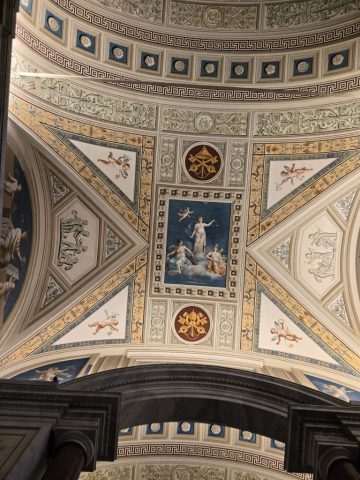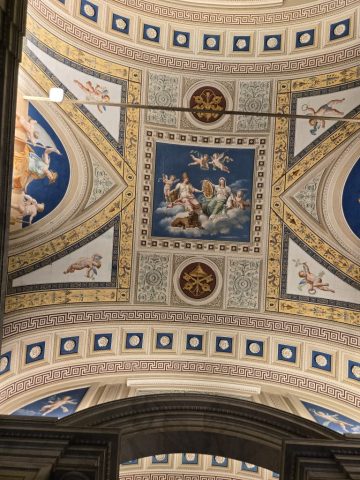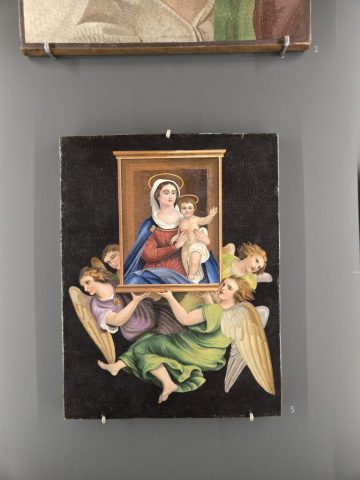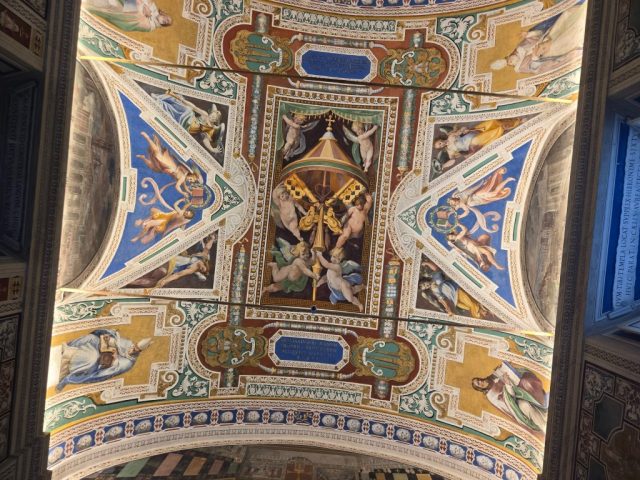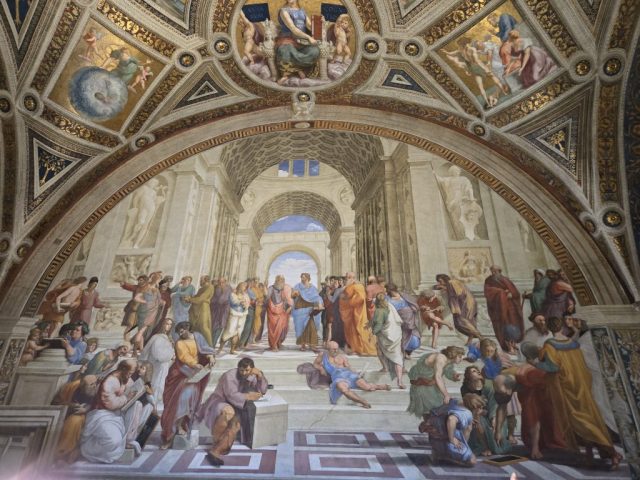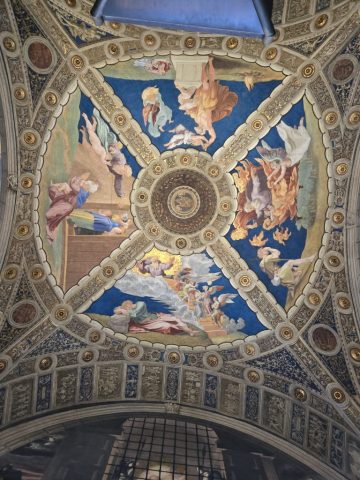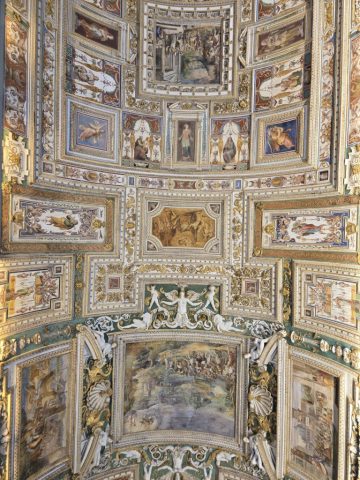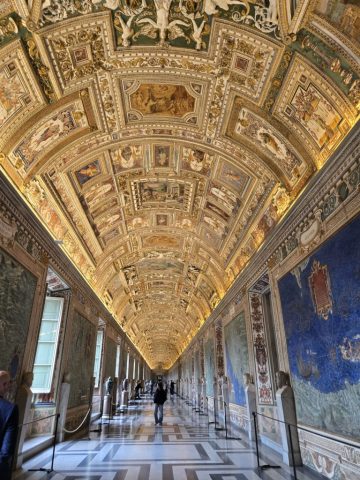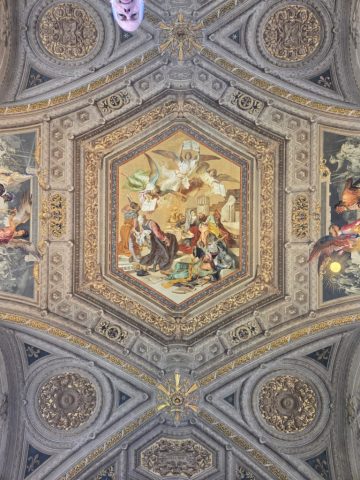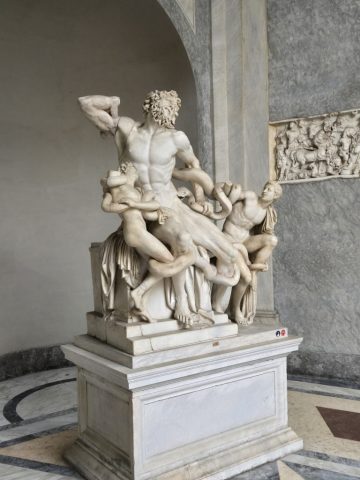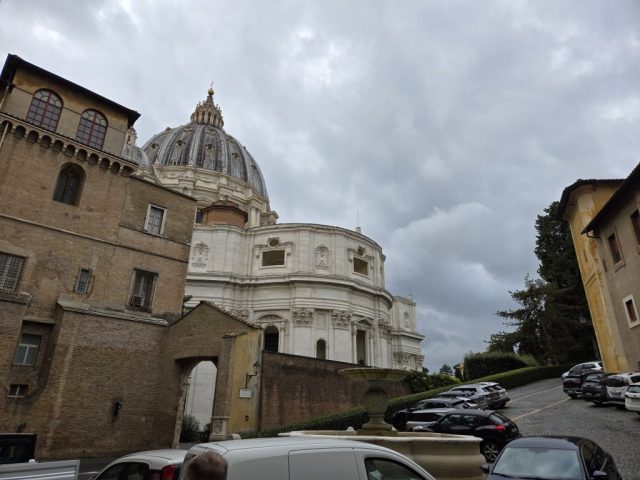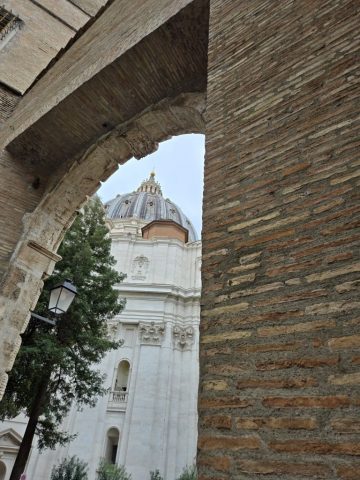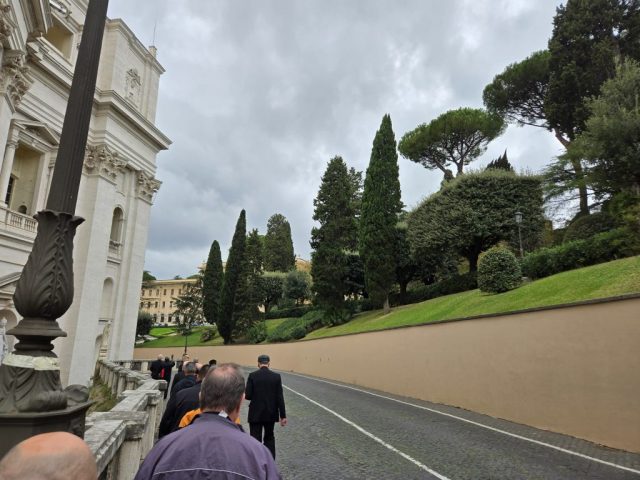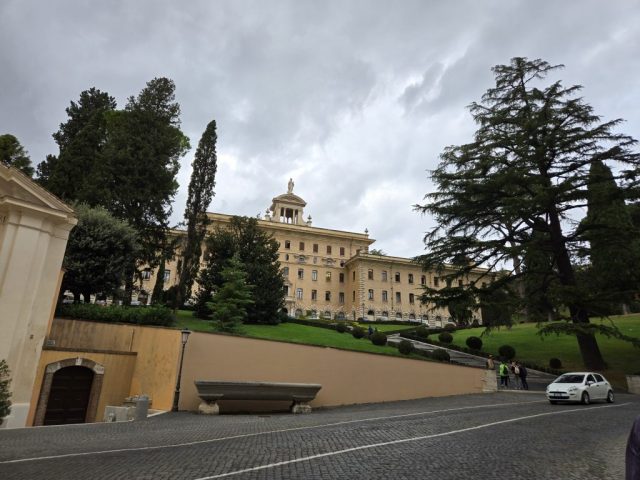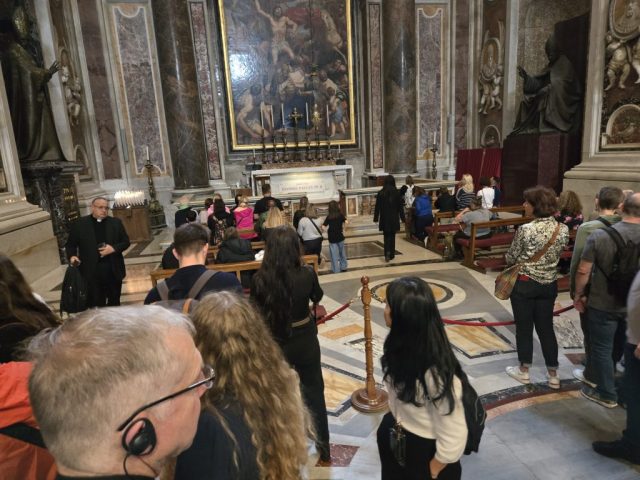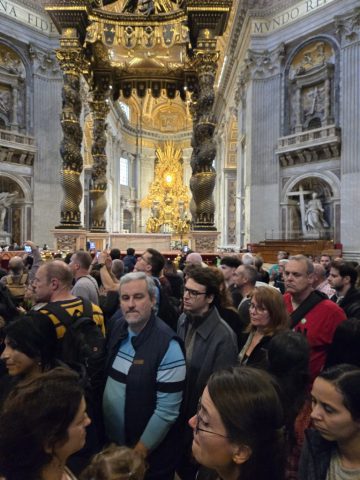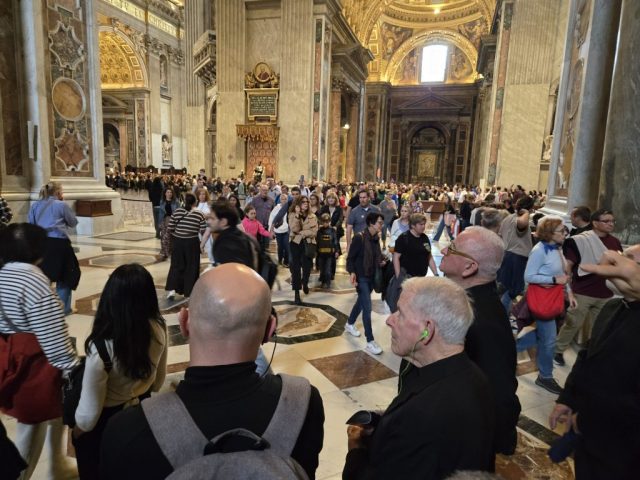The Vatican Museum
On Thursday, October 30th, my classmates and I rose early and departed at 7am for the Vatican Museums. Unlike other museum visitors, we were treated as if we were patrons of the Museum and permitted access a full hour before the museum was open to the public! Our tour guide, Dr. Liz Lev, led us on a quick tour through the museum as we made our way to the Sistine Chapel. And, when we arrived in the Sistine Chapel (about an hour into our tour, and long about the time the museum was opening to the public), we were the ONLY ONES in the Chapel (apart from the cleaning staff, who were still buffing the floor)!
 I’d been in the Sistine Chapel perhaps three times before this, and it was always shoulder-to-shoulder; you couldn’t look down, because you’d only see shoes – so your only option was to look up. Today, however, I was taken by the Cosmatesque style of inlaid marble on the floor. Granted, that is a typical style of flooring used in churches in the 14th and 15th centuries, but I’d never been able to see the floor (due to the the fact that the Sistine Chapel is always overflowing with visitors) until today! (And those the pic to the right isn’t mine, it does accurately depict our experience in the Sistine Chapel → just us & the guards)
I’d been in the Sistine Chapel perhaps three times before this, and it was always shoulder-to-shoulder; you couldn’t look down, because you’d only see shoes – so your only option was to look up. Today, however, I was taken by the Cosmatesque style of inlaid marble on the floor. Granted, that is a typical style of flooring used in churches in the 14th and 15th centuries, but I’d never been able to see the floor (due to the the fact that the Sistine Chapel is always overflowing with visitors) until today! (And those the pic to the right isn’t mine, it does accurately depict our experience in the Sistine Chapel → just us & the guards)
While we were not allowed to take pictures in the Sistine Chapel, Dr. Lev was allowed to speak (normally, tour guides cannot lead tours within the chapel – and silence is regularly requested by the curators). Dr. Lev made a number of key observations as we spent about 20 minutes in the chapel by ourselves:
- In the first three panels of the creation story, there’s a lack of clarity in the images; clarity only comes with the creation of man in the fourth panel.
- In the creation stories across the ceiling, everyone focuses on the image of God reaching out to Adam as being the center of it all, but that’s not the center; the center is the creation of woman. Creation was not complete until God created both man and woman in His image.
- The six panels along each side wall are not all painted by Michelangelo – but he brought in several ‘big names’ of the time and commissioned them to paint the panels … including Rafael. Toward the main entrance to the Sistine Chapel, there are two panes specifically painted by Michelangelo that are a commentary for those gathered in the entryway. One side depicts peace and serenity, which Christ entrusting Peter with the keys to the Kingdom; the opposing image depicts chaos and anarchy—with the message being: remain with Christ and His Church and all will be well, but rest assured of chaos if you oppose or rebel against Christ.
 Giving the Keys to St. Peter
Giving the Keys to St. Peter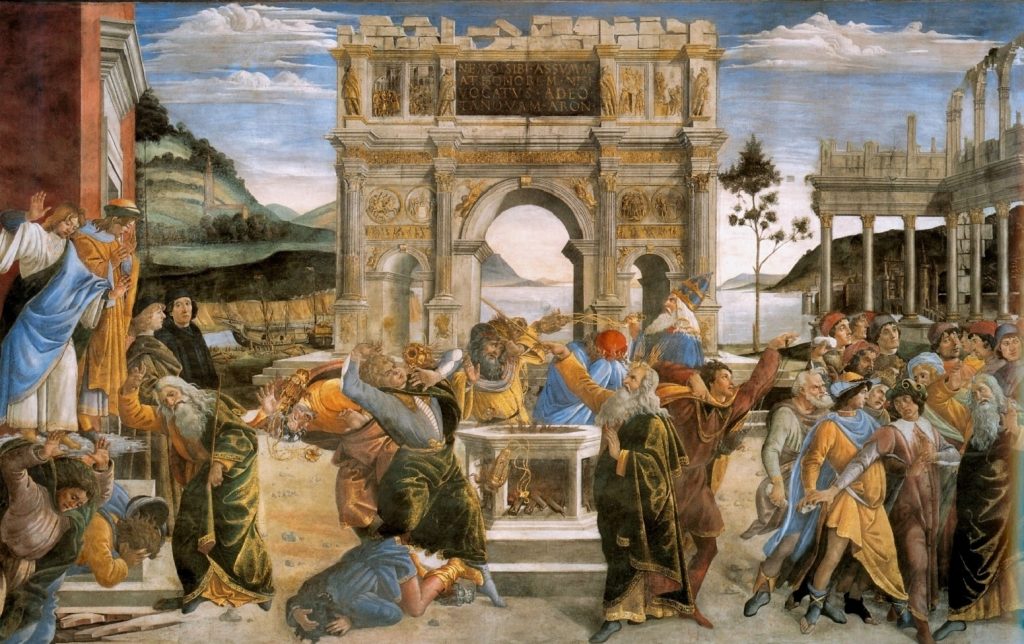 The stoning of Moses & Aaron
The stoning of Moses & Aaron - The scene behind the main altar, often referred to as the final judgment scene, was painted a full 25-years after Michelangelo finished the ceiling and walls of the Sistine Chapel; he’s a much older, and far more mature, man as he paints the scene of judgment. In the lower left of the scene you see skeletons and demons – and the only think keeping them from the person viewing the scene is the power of Christ. The symbolism and imagery Michelangelo included in that final judgment scene is beyond belief.
We could’ve stayed in the Sistine Chapel all day, but the curator who was taking us around informed us we’d used our allotted time. But to have been the only ones in the chapel was phenomenal.
While I was captivated by much that we saw, I was amazed by the intricate artwork on the ceilings throughout the Vatican Museum. Most everyone was looking left, right, and down, but I didn’t notice too many looking up. I, on the other hand, did a lot of looking up; gratefully I didn’t trip over, or run into, anyone in the process of looking up!
When we finished at the Vatican Museum, we walked through the Vatican to the Basilica of St. Peter. The landscaping and the views were spectacular; I found myself taking most everything in … but then figured I should probably take a few pics. Enjoy!
